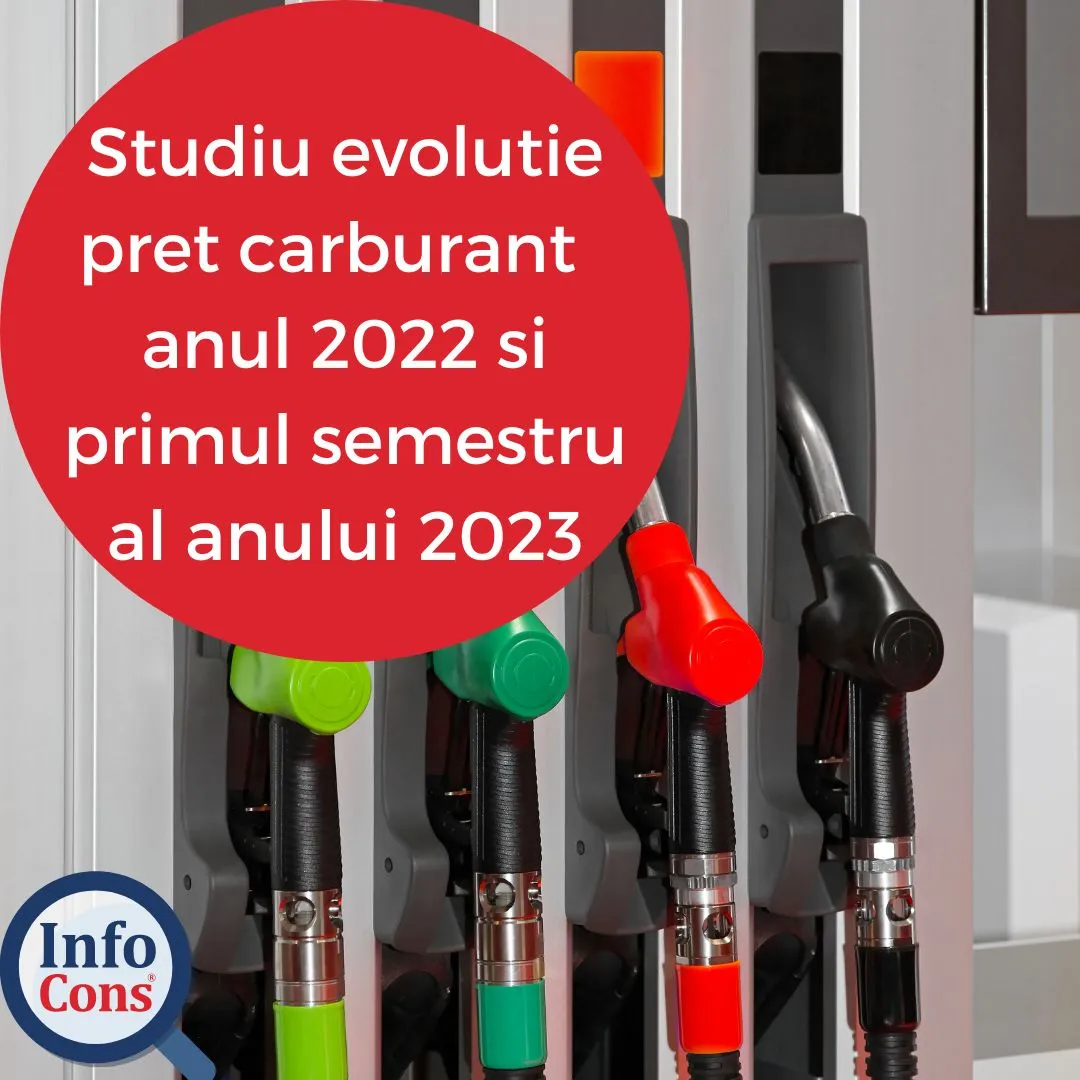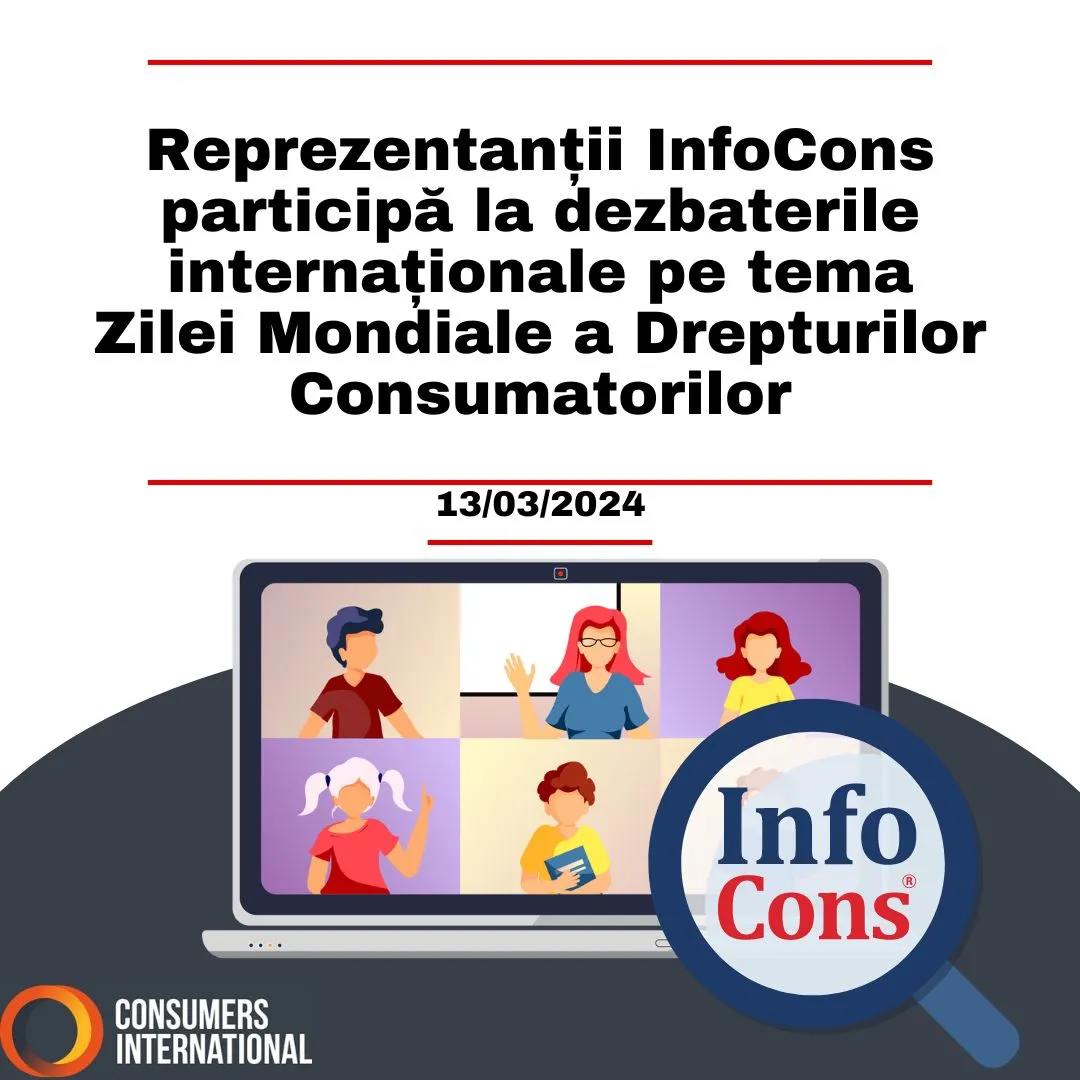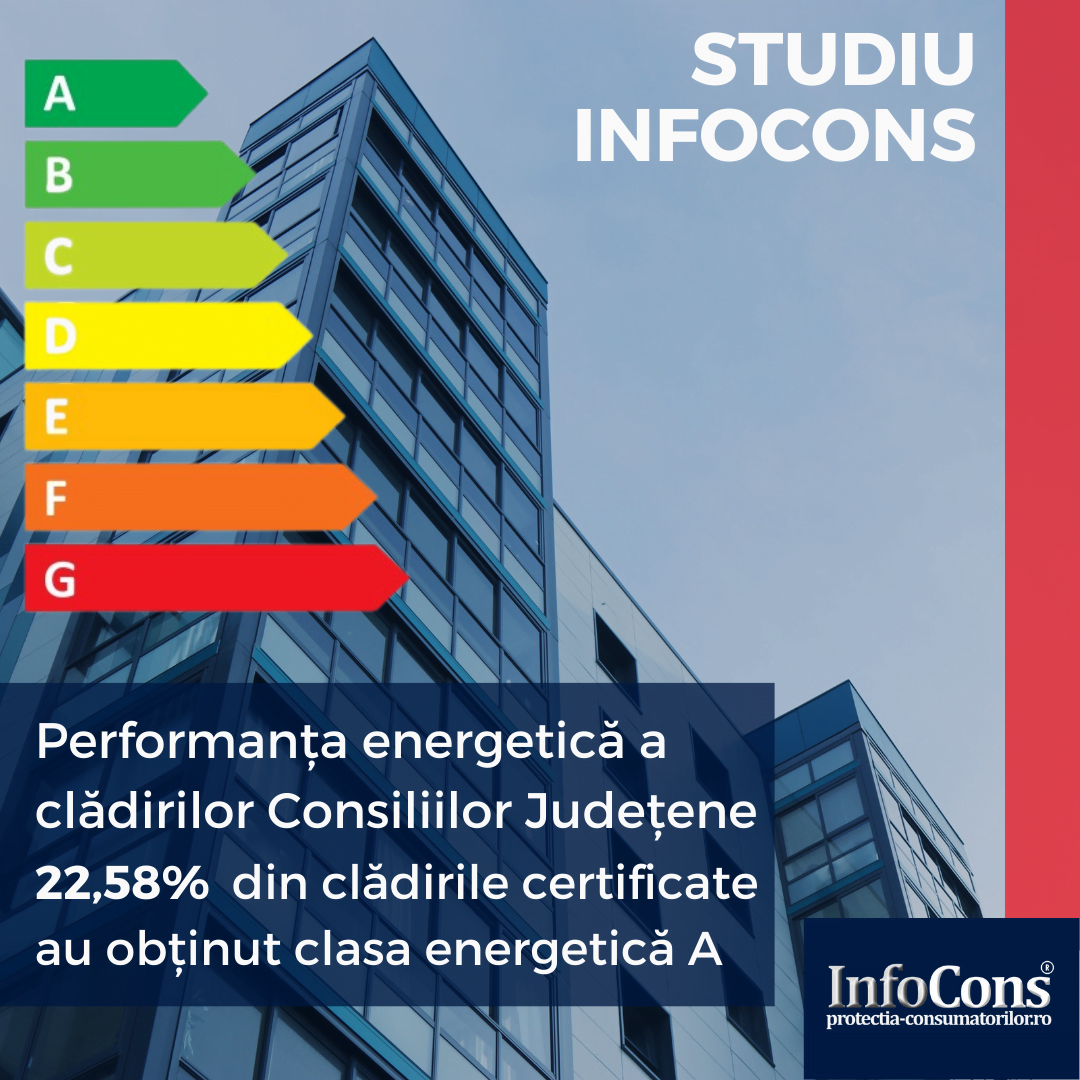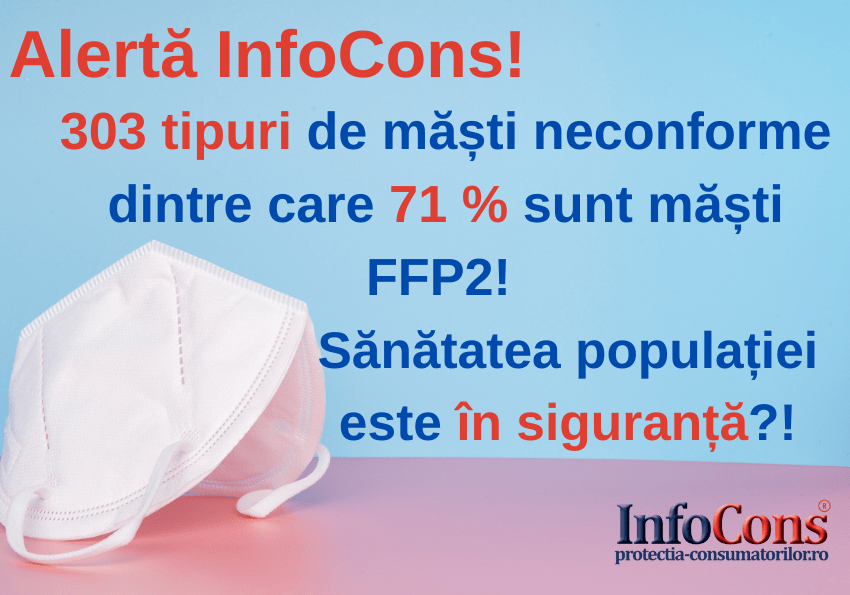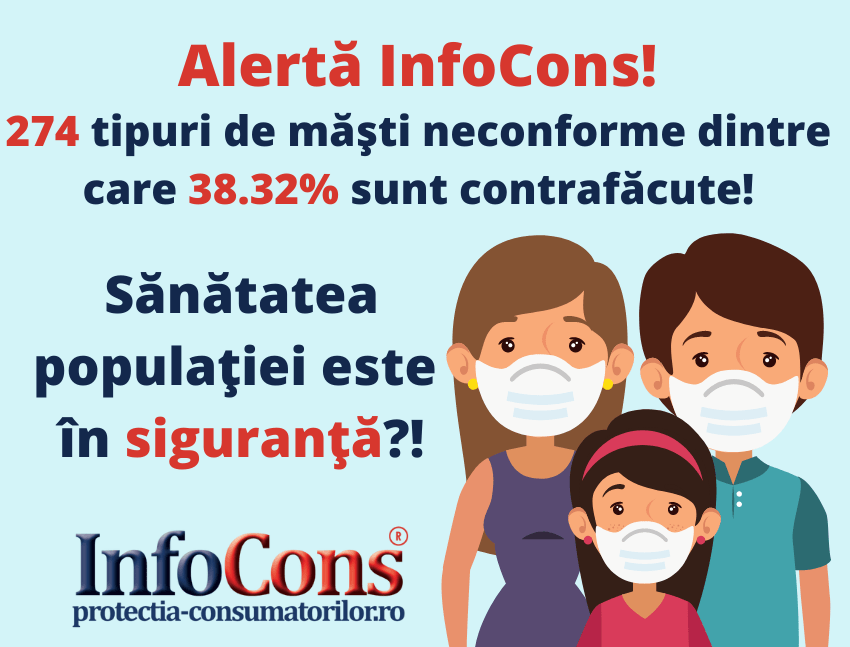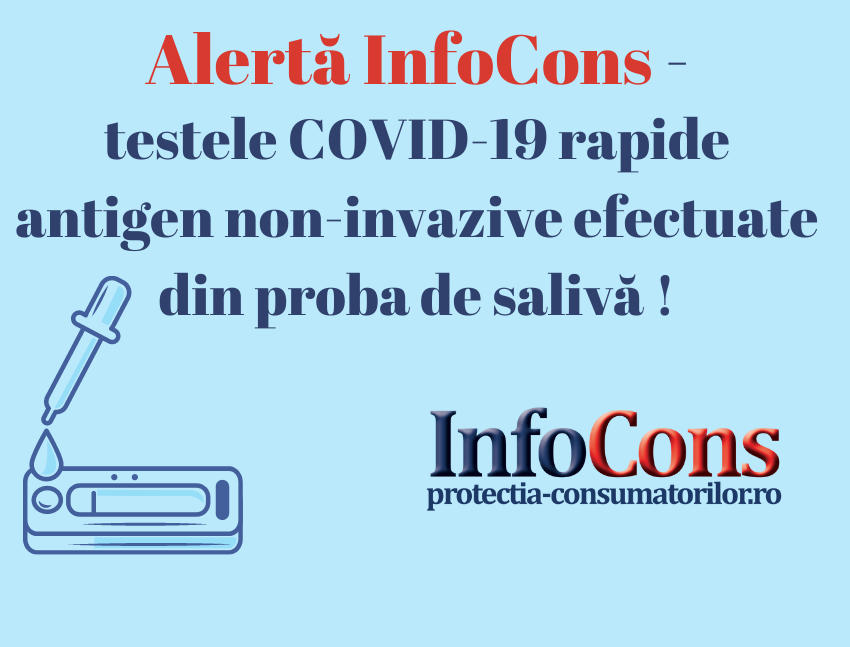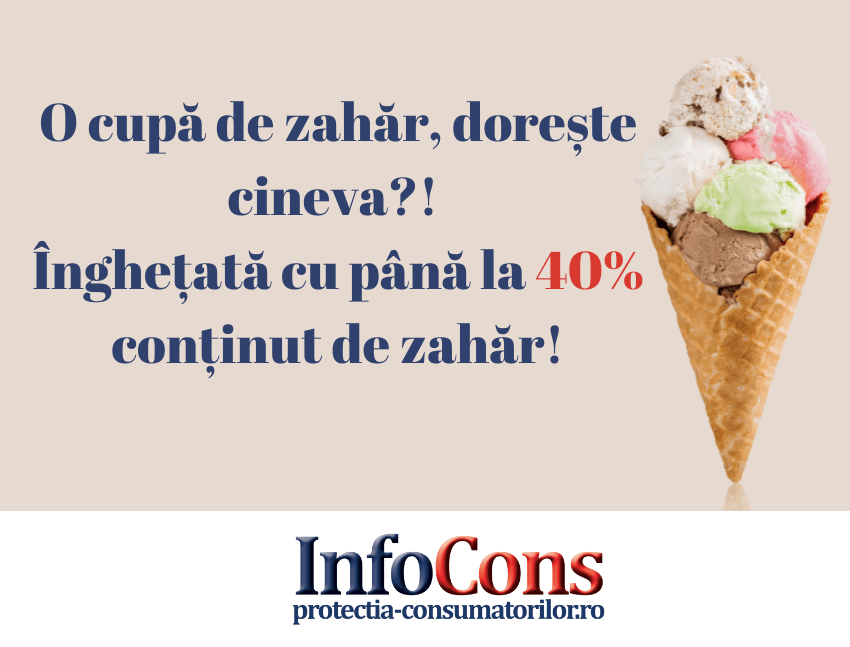Regulament de acordare și utilizare a dreptului de folosință a Mărcii Încrederii a Programului „Global Carbon Point”
PREAMBUL
- Regulamentul reflectă și reiterează obiectivele cuprinse în Strategia de protecție a mediului destinată consumatorilor, cu accent pe implicarea și conștientizarea acestora cu privire la impactul lor asupra mediului înconjurător.
- Programul „Global Carbon Point” contribuie la unul dintre cele cinci obiective principale subliniate la Conferința părților UNFCCC din 2022 (COP27), acesta fiind decarbonizarea industriilor.[1]
- Acest Regulament a fost redactat luând în considerare strategia Uniunii Europene privitoare la Pactul Verde European, prin care atât Uniunea Europeană, cât și Statele Membre recunosc și subliniază atât importanța acțiunilor pentru protecția mediului, cât și necesitatea urgentării acțiunilor la nivel continental și global.[2]
- Prezentul Regulament cuprinde condițiile oficiale conform cărora se acordă dreptul de utilizare a Mărcii Încrederii a Programului „Global Carbon Point” (numită în continuare Marca GCP). Marca GCP fiind o marcă înregistrată, condițiile cuprinse în prezentul Regulament sunt stabilite în conformitate cu uzanța regimului de acordare a mărcilor înregistrate.
- Condițiile prezente au în vedere toți solicitanții și beneficiarii dreptului de utilizare a Mărcii GCP (numiți în continuare beneficiarii), și stabilesc o serie de drepturi și obligații ale acestora.
- Prin aceste condiții se stabilesc normele de eligibilitate pentru primirea dreptului de a utiliza Marca GCP, obligațiile corelate (precum obligația de raportare), însă și norme pentru soluționarea reclamațiilor și a posibilelor litigii.
- Prin solicitarea sau beneficierea dreptului de a utiliza Marca GCP, toți solicitanții și beneficiarii își dau consimțământul în privirea respectării tuturor termenilor și condițiilor prezente în Regulamentul curent.
- Obiectivele prezentului Regulament:
- să-i informeze pe toți solicitanții și beneficiarii asupra drepturilor și obligațiilor lor, pentru a asigura utilizarea corectă și conformă cu Regulamentul și cu Manualul de identitate vizuală;
- să consolideze încrederea consumatorilor în produsele certificate în cadrul Programului.
- Dreptul de proprietate intelectuală asupra Mărcii GCP este deținut în totalitate de către Asociația InfoCons.
- Certificarea produsului/serviciului/instituției se face în anul în curs, pentru perioada pentru care s-a realizat documentația tehnică.[3]
CAPITOLUL I – DISPOZIȚII GENERALE
Art. 1 Scopul Regulamentului
1.1 Prezentul Regulament stabilește criteriile, responsabilitățile și mecanismul de acordare a dreptului de utilizare a Mărcii GCP.
1.2 Regulamentul a fost elaborat în baza Statutului-Regulament al InfoCons.
Art. 2 Marcă Certificată
2.1 Marca Încrederii „Global Carbon Point” este înregistrată la OSIM de către Asociația InfoCons, care are dreptul de proprietate exclusivă asupra acestei mărci.
2.2 Marca GCP este menită să certifice produsele/serviciile/instituțiile sau companiile care iau inițiativă în ceea ce privește acțiuni care au un impact asupra mediului, mai precis în privința reducerii emisiilor de gaze cu efect de seră. Marca GCP certifică amprenta de carbon calculată la nivel de instituție – publică sau privată – sau la nivel de produs sau serviciu, după cum urmează:
- Marca GCP pentru produse/servicii: Pentru această certificare, solicitantul va calcula amprenta de carbon pentru produsul/serviciul pentru care se solicită certificarea, în concordanță cu cerințele cuprinse în Anexa 6 din Regulament. Documentația tehnică privitoare la amprenta de carbon va fi evaluată de către Comisia Tehnică de Evaluare și Licențiere.
- Marca GCP pentru instituții publice și private: Pentru această certificare, solicitantul va calcula amprenta de carbon la nivel de instituție, în concordanță cu cerințele cuprinse în Anexa 6 din Regulament. Documentația tehnică privitoare la amprenta de carbon va fi evaluată de către Comisia Tehnică de Evaluare și Licențiere.
2.3 Marca GCP este acordată solicitanților de către InfoCons numai în condițiile în care Comisia Tehnică de Evaluare și Licențiere atestă faptul că solicitantul respectă cerințele formulate în Ghidul tehnic. Un audit al documentației anterior înaintării cererii de înregistrare pentru marcă nu exceptează solicitantul de evaluarea obligatorie realizată de către Comisia Tehnică de Evaluare și Licențiere.
2.4 Folosirea Mărcii GCP de către beneficiar se va face doar în condițiile prezentului Regulament și ale celor stipulate în Manualul de identitate vizuală. De asemenea, Marca GCP se va folosi numai pentru produsul/serviciul/instituția sau compania pentru care a fost obținut dreptul de utilizare a Mărcii GCP, atestat prin Certificatul de utilizare.
2.5. În cazul în care solicitantul nu are calculată o amprentă de carbon pentru produsul/serviciul/instituția pe care dorește să o certifice, este necesar ca aceasta să creeze documentația tehnică cu ajutorul unei entități certificate de InfoCons.
2.6 În cazul în care solicitantul are deja calculată o amprentă de carbon pentru produsul/serviciul/instituția pe care dorește să o certifice, Comisia Tehnică de Evaluare și Licențiere poate nominaliza, după caz, un auditor independent pentru realizarea auditului documentației tehnice referitoare la amprenta de carbon. În urma auditului, Comisia Tehnică de Evaluare și Licențiere va lua decizia finală în legătură cu acordarea dreptului de utilizare.
Art. 3 Comunicări
Toate comunicările avute pentru acordarea dreptului de utilizare a Mărcii GCP se vor realiza între reprezentanții desemnați ai InfoCons și ai subiecților solicitanți sau beneficiari. Anumite comunicări cu solicitanții/beneficiarii se vor realiza și prin intermediul unor entități desemnate și certificate de către InfoCons.
Art. 4 Definiții
- Sintagma acordarea Mărcii Încrederii a Programului „Global Carbon Point” – acordarea de către InfoCons a dreptului de utilizare asupra Mărcii GCP pentru o perioadă predefinită, în condițiile stipulate de prezentul Regulament;
- Solicitant – persoană juridică care dorește să obțină dreptul de utilizare asupra Mărcii GCP;
- Beneficiar – persoană juridică care, în baza unei cereri scrise, a plății unor taxe și a unei aprobări scrise, a obținut dreptul de utilizare a Mărcii GCP;
- Norme de evaluare – normele stabilite de comisiile de specialitate ale programului de acordare a dreptului de utilizare a Mărcii GCP;
- Documentație tehnică – raportul privind calculul amprentei de carbon;
- Clase de produse/servicii – cumulul mai multor categorii de bunuri și servicii ce prezintă elemente comune. Clasele de produse/servicii sunt definite prin atribuirea unor numere de ordine începând cu 2000, iar categoriile – prin atribuirea unor litere începând cu litera A, conform Anexei 7. Acestea sunt parte integrantă a prezentului Regulament;
- Clase de instituții – cumulul mai multor categorii de instituții ce prezintă elemente comune. Clasele de instituții sunt definite prin atribuirea unor numere de ordine începând cu 1000, iar categoriile – prin atribuirea unor litere începând cu litera A, conform Anexei 7. Acestea sunt parte integrantă a prezentului Regulament;
- Registrul Național de Evidență – registrul în care sunt menționate datele de identificare ale solicitanților dreptului de utilizare asupra Mărcii GCP;
- Taxa de înregistrare în Registrul Național de Evidență – taxa de înregistrare în Registrul Național de Evidență, în baza cererii de înregistrare formulate de solicitant. Cuantumul acestei taxe este prevăzut în Capitolul IV;
- Taxa de evaluare – taxa percepută pentru evaluarea produselor/serviciilor/instituțiilor, solicitată prin formularul GCP01 sau GCP02. Această evaluare este făcută de către consultanți independenți, la cererea solicitantului cu indicațiile InfoCons, și supravegheată de către Comisia Tehnică de Evaluare și Licențiere, în baza normelor de evaluare. Cuantumul acestei taxe este prevăzut la Capitolul IV;
- Taxa de verificare – taxa percepută în vederea verificării documentației tehnice, prevăzută la Capitolul IV;
- Taxa de marcă – taxa plătită de solicitant în condițiile obținerii evaluării favorabile, în concordanță cu normele de evaluare ale InfoCons. Cuantumul acestei taxe este prevăzut în Capitolul IV și se va achita după fiecare reevaluare favorabilă;
- Cerere de înregistrare în Registrul Național de Evidență al InfoCons – regăsită în Anexa 1, parte integrantă a prezentului Regulament;
- Formularul GCP01 – regăsit în Anexa 2, parte integrantă a prezentului Regulament; este destinat solicitanților care doresc certificarea pentru produse/servicii;
- Formularul GCP02 – regăsit în Anexa 3, parte integrantă a prezentului Regulament; este destinat solicitanților care doresc certificarea pentru instituții/companii;
- Certificatul de utilizare a Mărcii Încrederii a Programului „Global Carbon Point” – actul care atestă dreptul de folosință a Mărcii, cu o valabilitate de 12 luni. Modelul acestuia se poate regăsi în Anexa 4, parte integrantă a prezentului Regulament;
- Manual de identitate vizuală a programului de acordare a dreptului de utilizare a Mărcii Încrederii a Programului ,,Global Carbon Point” – prezentat în Anexa 5, parte integrantă a prezentului Regulament;
- Ghidul tehnic – prezentat în Anexa 6, parte integrantă a prezentului Regulament;
- Comisia de Investigare – Comisia de Investigare are rolul de a efectua investigații și de a transmite concluzii proprii în legătură cu soluționarea unui posibil conflict;
- Comisia de Disciplină – Comisia de Disciplină are rolul de a analiza investigațiile realizate de către Comisia de Investigare și de a soluționa conflictele;
- Norma de certificare InfoCons – un ansamblu de criterii stabilite pentru demonstrarea calității și a standardelor de lucru pe care companiile trebuie să le îndeplinească pentru a deveni parteneri certificați. Se regăsește în Anexa 8, parte integrantă a prezentului Regulament;
- Entitate certificată InfoCons – entitate care a trecut prin procesul de certificare și a demonstrat că serviciile pe care le va presta se vor putea ridica la standardele InfoCons, conform Normei de certificare InfoCons;
- Ghid de navigare a anexelor – explicații prezentate la finalul Regulamentului, privind modul de parcurgere a anexelor prezentate în prezentul Regulament.
Art. 5 Specificații în legătură cu clase și categorii
5.1 Clasele și categoriile de produse și servicii pentru care se acordă dreptul de folosință asupra Mărcii GCP se regăsesc în Anexa 7, parte integrantă a prezentului Regulament.
5.2 Clasele și categoriile de instituții/companii pentru care se acordă dreptul de folosință asupra Mărcii GCP se regăsesc în Anexa 7, parte integrantă a prezentului Regulament.
CAPITOLUL II – STRUCTURA DE ORGANIZARE ȘI FUNCȚIONARE A PROGRAMULUI DE ACORDARE A DREPTULUI DE FOLOSINȚĂ A MĂRCII PROGRAMULUI
Art. 6 Registrul Național de Evidență
În vederea acordării dreptului de utilizare a Mărcii GCP, se va înființa Registrul Național de Evidență, în care vor fi înscrise și actualizate datele de identificare ale solicitanților și beneficiarilor, precum și toate operațiile care se fac în legătură cu obținerea dreptului de folosință a mărcii, evaluarea și verificarea, taxele plătite, taxele restante, sesizările sau reclamațiile primite, încălcarea regulilor, litigiile și modul de soluționare a acestora.
Art. 7 Comisii din cadrul Programului
În cadrul Programului vor lua ființă și vor funcționa comisii cu sarcini și responsabilități care derivă din cerințele aplicării Statutului-Regulament al InfoCons, precum și din cerința realizării unei bune gestionări a Programului. Toate componentele organizatorice vor respecta întocmai acuratețea datelor și a informațiilor în baza cărora se acordă dreptul de utilizare a Mărcii GCP.
Art. 8 Verificarea documentației tehnice
8.1 Pentru verificarea documentației tehnice în sensul prezentului regulament, este înființată, prin decizia Consiliului Director al InfoCons, Comisia Tehnică de Evaluare și Licențiere.
8.2 Comisia de Evaluare va fi condusă de un președinte, numit prin decizia Consiliului Director al InfoCons. Acesta va organiza și răspunde de funcționarea comisiei, care va folosi în interesul Programului numai cabinete de audit atestate și agreate de conducerea InfoCons, când este cazul, la cererea expresă a Consiliului Director InfoCons.
Art. 9 Soluționarea conflictelor
9.1 Conflictele apărute între diferite organisme de lucru din cadrul Programului de acordare a dreptului de utilizare a Mărcii GCP sau între acestea, pe de o parte, și solicitanții, beneficiarii și terțe organizații cu care cooperează, pe de altă parte, vor fi supuse spre analiză și spre soluționare Comisiei de Disciplină.
9.2 Comisia de Disciplină va funcționa după un regulament propriu, care urmează să fie elaborat și supus aprobării Consiliului Director al InfoCons.
Art. 10 Conflicte dificile
Pentru soluționarea conflictelor cu dificultate sporită, se înființează și funcționează Comisia de Investigare. În urma investigațiilor efectuate, această comisie formulează concluziile proprii, pe care le transmite Comisiei de Disciplină pentru a servi la soluționarea conflictelor.
Art. 11 Litigii
11.1 Părțile conflictului vor depune toate eforturile pentru a rezolva pe cale amiabilă, prin tratative directe și prin intermediul Comisiei de Disciplină, orice neînțelegere sau dispută care se poate ivi între ei în cadrul sau în legătură cu îndeplinirea obligațiilor.
11.2 În termen de maximum 15 de zile lucrătoare de la apariția unei dispute, părțile conflictului se vor notifica reciproc în scris asupra pozițiilor adoptate, precum și cu privire la soluțiile propuse pentru rezolvarea disputei respective.
11.3 Dacă, după 15 zile lucrătoare de la începerea acestor tratative directe, părțile conflictului nu reușesc să rezolve în mod amiabil o divergență contractuală, fiecare poate solicita ca disputa să fie soluționată de către instanțele judecătorești competente.
CAPITOLUL III – PROCEDURA DE ACORDARE A DREPTULUI DE UTILIZARE A MĂRCII PROGRAMULUI
Art. 12 Procedură de înregistrare
12.1 Solicitantul va completa cererea de înregistrare în Registrul Național de Evidență al InfoCons, conform Anexei 1. Datele trebuie completate conform realității și a documentelor constatatoare, după caz. Veridicitatea informațiilor furnizate de către solicitant/beneficiar este strict responsabilitatea solicitantului/beneficiarului.
12.2 Solicitantul va plăti taxa de înregistrare în contul desemnat InfoCons, obținând dovada achitării taxei de înregistrare.
12.3 Cererea de înregistrare și dovada achitării taxei de înregistrare va fi trimisă către InfoCons sau unor societăți/organizații datate de InfoCons să asigure colectarea taxelor Programului.
12.4 Toate documentele ce trebuie transmise, în vederea realizării verificării, vor fi transmise în format digital. În cazul unei evaluări favorabile, și prin urmarea acordării dreptului de utilizare, documentele vor trebui trimise și în format fizic.
Art. 13 Prima comunicare
13.1 În termen de maximum 15 zile lucrătoare de la data înaintării cererii de înregistrare și a atestării plății taxei de înregistrare, InfoCons va adresa solicitantului o comunicare privind înscrierea sa în Registrul Național de Evidență al InfoCons. Comunicării îi vor fi anexate: Formular GCP01 (Anexa 2) și/sau Formular GCP02 (Anexa 3), după caz; informațiile și procedurile necesare evaluării în vederea acordării dreptului de utilizare a Mărcii GCP prevăzute în prezentul Regulament; factura emisă pentru suma ce reprezintă taxa de înregistrare în Registrul Național de Evidență.
13.2 După primirea înștiințării conform căreia cererea a fost înscrisă în Registrul Național de Evidență al InfoCons, solicitantul va transmite în termen de maximum 10 zile calendaristice către InfoCons Formularul GCP01 (Anexa 2) și/sau Formularul GCP02 (Anexa 3) completate, împreună cu toate documentele prevăzute în acest/e formular/e. În cazul în care solicitantul are documentația tehnică și nu transmite informațiile în termenul prevăzut mai sus, acesta încalcă prezentul Regulament. Efectul unei asemenea încălcări este reprezentat de primirea unui răspuns negativ în privința acordării dreptului de utilizare a Mărcii GCP.
13.3 În cazul în care solicitantul nu are documentația tehnică referitoare la amprenta de carbon, acesta va notifica InfoCons în termen de maximum 10 zile calendaristice, pentru începerea procedurii de alocare a consultantului certificat. InfoCons îi va comunica solicitantului, în scris, procedura de urmat pentru realizarea documentației cu ajutorul unor companii/organizații certificate InfoCons. Pentru realizarea documentației, solicitantul va achita taxa de evaluare. Odată ce solicitantul face dovada achitării taxei sus-menționate, InfoCons va pune solicitantul în contact cu organizația care oferă consultanță. După finalizarea documentației tehnice, solicitantul va depune documentația tehnică (raportul de amprentă de carbon) și Formularul GCP01 (Anexa 2) și/sau Formularul GCP02 (Anexa 3), după caz. În cazul în care solicitantul nu transmite către InfoCons și către consultantul desemnat informațiile specifice în termen de 10 zile lucrătoare de la solicitarea acestora, acesta încalcă prezentul Regulament, ceea ce atrage după sine respingerea obținerii certificării.
Art. 14 Verificare de către Comisia Tehnică de Evaluare și Licențiere
14.1 În termen de 15 zile lucrătoare de la data primirii Formarului GCP01 (Anexa 2) și/sau a Formularului GCP02 (Anexa 3), completat/e, și a documentelor prevăzute, Comisia Tehnică de Evaluare și Licențiere va comunica solicitantului procedurile de urmat în vederea efectuării verificării calității amprentei de carbon pentru care este solicitat dreptul de utilizare a Mărcii GCP.
Verificarea documentației tehnice este realizată, în primul rând, de către Comisia Tehnică de Evaluare și Licențiere. În cadrul verificării, se va lua în considerare dacă documentația tehnică a fost realizată de către o companie certificată InfoCons, în sensul prezentat în Anexa 8. Prin urmare, în cazul în care documentația a fost realizată de către o companie certificată InfoCons, solicitantul va fi expus numai la auditul realizat de către Comisia Tehnică de Evaluare și Licențiere. Pe de altă parte, dacă documentația tehnică nu a fost realizată de către o companie certificată InfoCons, Comisia Tehnică de Evaluare și Licențiere va impune realizarea de către o companie certificată InfoCons a unui audit extern anterior propriului audit. În urma propriei verificări și/sau după caz, a auditului extern, Comisia Tehnică de Evaluare și Licențiere va lua o decizie în legătură cu posibilitatea acordării dreptului de folosință a Mărcii GCP.
Art. 15 Începerea procedurii de evaluare sau de verificare
Procedura de evaluare sau de verificare va începe în maximum 5 zile lucrătoare după primirea dovezii de plată a taxei de evaluare, respectiv a taxei de verificare.
Art. 16 Rezultatul evaluării/verificării
Rezultatul evaluării/verificării va fi comunicat solicitantului împreună cu factura finală pentru taxa de evaluare și/sau de verificare. În situația obținerii unei evaluări favorabile, va fi anexată și factura proformă privind taxa de marcă.
Art. 17 Certificatul de marcă
- Certificatul de utilizare a Mărcii GCP va fi eliberat de InfoCons, prin Secretariatul General, pe baza dovezii achitării taxei de marcă. Certificatul va fi însoțit de Manualul de identitate vizuală a programului de acordare a dreptului de utilizare a Mărcii Încrederii a Programului „Global Carbon Point” , împreună cu factura finală pentru taxa de marcă.
- Certificatul de utilizare este și rămâne proprietatea InfoCons.
Art. 18 Reverificarea documentației tehnice
- În cazul în care Comisia Tehnică de Evaluare și Licențiere va constata, în urma propriului audit și/sau în urma unui audit extern, că amprenta de carbon nu întrunește condițiile cerute de normele de evaluare, aceasta nu va putea acorda solicitantului Certificatul de utilizare. Solicitantului i se va comunica în scris acest fapt, cu precizarea motivului pentru care nu i se poate acorda Certificatul.
- Solicitantul are posibilitatea de a adresa Asociației o cerere privind efectuarea unei noi verificări, cu motivarea acestei cereri. Documentația necesară (o amprentă îmbunătățită din punctul de vedere al respectării Ghidului tehnic, sau includerea unor documente justificatoare care lipseau) va fi transmisă către Asociație sau către Comisia Tehnică de Evaluare și Licențiere, într-un termen de 60 zile lucrătoare de la data comunicării rezultatului negativ al evaluării.
- Dacă solicitantul nu este mulțumit de rezultatul obținut, se reia procedura de certificare, fără plata taxei de înregistrare.
Art. 19 Reclamații în legătură cu rezultatul verificării
În situația în care solicitantul este nemulțumit de rezultatul verificării, acesta are dreptul de a sesiza Comisia de Disciplină din cadrul InfoCons, care va comunica solicitantului, în termen de 15 zile lucrătoare, procedurile de urmat.
Art. 20 Arhiva InfoCons
Toate documentele înaintate către Asociație – cererea de înregistrare în Registrul Național de Evidență, documentele ce formează conținutul dosarului înaintat pentru Comisia Tehnică de Evaluare și Licențiere, documentele implicate de operațiile de evaluare, precum și orice alte înscrisuri legate de acordarea dreptului de utilizare a Mărcii GCP – vor face parte din Arhiva InfoCons, în cazul în care rezultatul evaluării este favorabil.
Art. 21 Procesarea documentației
- Odată depuse, toate documentele rămân în arhiva Asociației InfoCons.
- În cazul în care rezultatele amprentei de carbon au fost aprobate de Comisia Tehnică de Evaluare și Licențiere, acestea vor fi făcute publice pe site-ul web dedicat Mărcii GCP.
Art. 22 Obligația de reluare a procedurii după expirarea perioadei prevăzute
- La trecerea unei perioade de 12 luni de la momentul obținerii de către solicitant a dreptului de utilizare a Mărcii GCP, acesta va trebui să transmită din nou formularele GCP01 și/sau GCP02, împreună cu documentația menționată în acestea, conținând informații actualizate pentru următoarea evaluare, pentru a putea păstra dreptul de utilizare a Mărcii GCP. În ceea ce privește Cererea de înregistrare, nu este necesar ca aceasta să fie retransmisă dacă informațiile incluse în aceasta au rămas neschimbate de la evaluarea precedentă.
- Dacă, în termen de 20 zile lucrătoare de la trecerea celor 12 luni, beneficiarul nu reia procedura de evaluare, transmițând documentația necesară și dovada achitării taxei de evaluare, beneficiarul pierde dreptul de utilizare a Mărcii GCP.
Art. 23 Nerambursarea taxelor
Toate taxele ce au fost plătite de solicitant sunt nerambursabile, indiferent de rezultatul evaluării comunicat solicitantului, și indiferent dacă în cursul uneia dintre procedurile de luare în evidență, evaluare, acordare a dreptului de utilizare a Mărcii GCP, solicitantul sau beneficiarul dorește să renunțe la continuarea procedurilor.
Art. 24 Retragerea dreptului de utilizare
Dreptul de utilizare a Mărcii GCP se va retrage în următoarele cazuri:
- Beneficiarul încalcă normele prevăzute în Manualul de identitate vizuală a programului de acordare a dreptului de utilizare a Mărcii Încrederii a Programului „Global Carbon Point”, redat în Anexa 5, sau obligațiile ce rezultă în sarcina sa din prezentul Regulament.
- Beneficiarul folosește însemnul Mărcii GCP pentru alte produse/servicii/instituții decât pentru cele ce au fost prezentate în vederea evaluării.
- Produsul/serviciul pentru amprenta căruia a fost obținut dreptul de utilizare a Mărcii GCP nu mai respectă caracteristicile celui evaluat de Comisia Tehnică de Evaluare și Licențiere, evaluare pe baza căreia s-a eliberat Certificatul de utilizare.
- Beneficiarul folosește însemnul Mărcii GCP pentru alt scop decât pentru cel prevăzut de prezentul Regulament.
- Beneficiarul nu notifică InfoCons în termen de 10 zile calendaristice de modificarea caracteristicilor ce au fost luate în considerare la evaluarea produsului/serviciului pentru care a fost obținută Certificarea.
Art. 25 Efectele ridicării dreptului de folosință
Beneficiarul are obligația de a remite InfoCons Certificatul de utilizare a Mărcii Încrederii a Programului „Global Carbon Point” din momentul comunicării ridicării dreptului de folosință asupra Mărcii GCP.
Art. 26 Cesiune
Dreptul de utilizare a Mărcii GCP nu va putea fi cesionat.
Art. 27 Achitarea taxelor
Taxele aferente acordării dreptului de utilizare a Mărcii GCP vor fi achitate de către solicitant sau beneficiar în contul Asociației.
CAPITOLUL IV – OBLIGAȚIILE FINANCIARE ALE SOLICITANTULUI ȘI ALE BENEFICIARULUI PENTRU DREPTUL DE UTILIZARE A MĂRCII PROGRAMULUI
Art. 28 Taxa de înregistrare
Taxa de înregistrare în Registrul Național de Evidență reprezintă taxa pentru luarea în evidență și pentru remiterea către solicitant a formularului GCP01 și/sau GCP02. Cuantumul acestei taxe este de 100 Euro, plătibil în RON la cursul BNR din ziua efectuării plății, ce vor fi depuși de solicitant în contul Asociației, în termen de 5 zile lucrătoare de la momentul înregistrării.
Art. 29 Taxa de evaluare și taxa de verificare
Taxa de evaluare reprezintă taxa percepută pentru evaluarea realizată de către organizațiile certificate InfoCons în vederea realizării documentației tehnice solicitate prin formularul GCP01 sau GCP02 pentru fiecare produs/serviciu/instituție.
Cuantumul taxei de evaluare pentru evaluarea amprentei la nivel de instituție va fi calculat în funcție de numărul de angajați, cifra de afaceri a acesteia și numărul de ore efectuate pentru finalizarea proiectului. Nivelul minim al acestei taxe, luând în considerare criteriile de mai sus, precum și numărul minim de ore prestate per categorii specifice, se poate regăsi în tabelul de mai jos:
Taxa de evaluare pentru instituții[4]
| Număr angajați | Cifra de afaceri (EUR) | Număr minim ore prestate | Cota min. (EUR) |
| <50 | 0–500,000 | 45 | 1,800 |
| 50–100 | 500,000–1,000,000 | 85 | 3,400 |
| 100–250 | 1,000,000–2,000,000 | 145 | 5,800 |
| 250–500 | 2,000,000–5,000,000 | 187.5 | 7,500 |
| 500+ | 5,000,000–10,000,000 | 250 | 10,000 |
Cuantumul taxei de evaluare pentru amprenta de carbon pentru produse/servicii va fi calculat în funcție de numărul de produse/servicii pentru care este solicitată certificarea, și de clasa și categoria produsului/serviciului. Nivelul minim al acestei taxe, luând în considerare criteriile de mai sus, se poate regăsi în tabelul de mai jos:
Taxa de evaluare pentru produse/servicii
| Număr produse/servicii | Cota min. EUR/produs sau serviciu |
| 1–4 | 2,000 |
| 5–9 | 1,500 |
| 10–50 | 1,000 |
| 50+ | 500 |
Taxa de verificare reprezintă taxa percepută pentru verificarea de către organizațiile de audit partenere InfoCons a documentației tehnice prevăzute în formularul GCP01 și/sau GCP02 pentru fiecare produs/serviciu/instituție.
Cuantumul taxei de verificare pentru verificarea amprentei la nivel de instituție va fi calculat în funcție de numărul de angajați, cifra de afaceri a acesteia și numărul de ore efectuate pentru finalizarea proiectului. Nivelul minim al acestei taxe, luând în considerare criteriile de mai sus, precum și numărul minim de ore prestate per categorii specifice, se poate regăsi în tabelul de mai jos:
Taxa de verificare pentru instituții[5]
| Număr angajați | Cifra de afaceri (EUR) | Număr minim ore prestate | Cota min. (EUR) |
| <50 | 0–500,000 | 20 | 800 |
| 50–100 | 500,000–1,000,000 | 37,5 | 1,500 |
| 100–250 | 1,000,000–2,000,000 | 80 | 3,200 |
| 250–500 | 2,000,000–5,000,000 | 120 | 4,800 |
| 500+ | 5,000,000–10,000,000 | 172,5 | 6,900 |
De asemenea, cuantumul taxei de verificare pentru amprenta de carbon pentru produse/servicii va fi calculat în funcție de numărul de produse/servicii pentru care este solicitată certificarea, și de clasa și categoria produsului/serviciului. Nivelul minim al acestei taxe, luând în considerare criteriile de mai sus, se poate regăsi în tabelul de mai jos:
Taxa de verificare pentru produse/servicii
| Număr produse/servicii | Cota min. EUR/produs sau serviciu |
| 1–4 | 950 |
| 5–9 | 700 |
| 10–50 | 600 |
| 50+ | 400 |
Art. 30 Taxa de marcă
- Taxa de marcă reprezintă taxa plătită de solicitant pentru utilizarea Mărcii GCP, în condițiile în care acesta a obținut o decizie favorabilă din partea Comisiei Tehnice de Evaluare și Licențiere. Cuantumul acestei taxe este de 100 Euro per produs/serviciu/instituție și se achită anual.
- În cazul în care solicitantul dorește să certifice 10 produse sau mai mult, taxa de marcă este fixă, în cuantum de 1000 Euro.
- Plata taxei de marcă se va achita la comunicarea rezultatului favorabil al evaluării în vederea obținerii dreptului de utilizare a Mărcii GCP și eliberării Certificatului de utilizare.
Art. 31 Moneda
Toate taxele menționate mai sus vor fi calculate în moneda națională la cursul de schimb din ziua plății al băncii naționale din țara în care se solicită certificarea.
Art. 32 Excepții de la necesitatea plății taxelor pentru instituții publice locale sau naționale
Instituțiile locale și naționale sunt exceptate de la plata taxelor sus-menționate, având în vedere angajamentul către un viitor sustenabil, asumat atât prin strategiile locale, cât și prin planurile naționale.
CAPITOLUL V – DISPOZIȚII FINALE
Art. 33
Pentru a asigura credibilitatea producătorilor, a furnizorilor de servicii și a instituțiilor publice și private în fața consumatorilor interni și externi, devine absolut necesară respectarea regulilor cuprinse în prezentul Regulament.
Art. 34
Folosirea fără drept a Mărcii GCP va atrage după sine introducerea de acțiuni în justiție, în vederea înlăturării acestei stări de fapt a reparării daunelor cauzate prin intermediul acesteia. În situația în care solicitantul/beneficiarul încalcă prevederile cuprinse în prezentul Regulament sau în Manualul de identitate vizuală a programului de acordare a dreptului de utilizare a Mărcii Încrederii a Programului „Global Carbon Point”, aducând astfel prejudicii, InfoCons își rezervă dreptul de a-l acționa în justiție în vederea recuperării prejudiciilor astfel aduse.
REGULAMENT CONCEPUT, REDACTAT ȘI AVIZAT DE:
INFOCONS GREEN
Ghid de navigare a anexelor
- Anexa 1 reprezintă Cererea de înregistrare în Registrul Național de Evidență a InfoCons. Datele solicitate pot fi considerate date standard de identificare ale societății. Obiectul de activitate al societății este reprezentat de către codul CAEN principal al societății. Copia certificatului de înregistrare la Oficiul Registrului Comerțului trebuie atașată Cererii de înregistrare la momentul depunerii.
- Anexele 2 și 3 reprezintă formularele de completat de către solicitant cu date specifice cu privire la activitatea societății, documentația tehnică privind amprenta de carbon și produsul/serviciul (Anexa 2) sau instituția (Anexa 3) pentru care se solicită certificarea. Documentația tehnică reprezintă raportul privind amprenta de carbon și documentele justificatoare pentru datele folosite în analiză. Aceste documente justificatoare includ – dar nu se limitează la – metodologia de calcul și fișierele doveditoare a modului de calcul. Cele două formulare vor fi completate de către solicitant cu clasa și categoria produsului/serviciului/instituției pentru care se solicită certificarea, în concordanță cu Anexa 7.
- Anexa 4 reprezintă Certificatul de utilizare a Mărcii Programului „Global Carbon Point”, care va fi completat de către InfoCons cu informațiile specifice solicitantului la momentul acordării dreptului de utilizare a Mărcii GCP.
- Anexa 5 reprezintă Manualul de identitate vizuală a programului de acordare a dreptului de utilizare a Mărcii „Global Carbon Point”. Acesta va fi consultat de către solicitant după acordarea dreptului de utilizare a Mărcii GCP, pentru a putea înțelege modul de implementare a Mărcii GCP.
- Anexa 6 reprezintă Ghidul tehnic. Acesta constituie setul de reguli și standarde tehnice pe care documentația tehnică trebuie să le îndeplinească pentru ca solicitantul să poată obține dreptul de utilizare a Mărcii GCP.
- Anexa 7 reprezintă clasele și categoriile pe care solicitantul trebuie să le consulte în atribuirea unei clase și a unei categorii produsului/serviciului/instituției.
- Anexa 8 reprezintă Norma de certificare a companiilor partenere InfoCons care vor oferi servicii de consultanță și audit. Norma de certificare conține criterii calitative tehnice și alte criterii pe care companiile certificate InfoCons le vor îndeplini anterior oferirii serviciilor către solicitant.
[1] COP27, Targets: https://cop27.eg/#/
[2]Parlamentul European, Pactul Verde: cheia unei Uniuni neutre climatic și sustenabile, https://www.europarl.europa.eu/news/ro/headlines/society/20200618STO81513/pactul-verde-cheia-unei-uniuni-neutre-climatic-si-sustenabile
[3] Spre exemplu, dacă o instituție dorește să se certifice în luna februarie 2023, documentația tehnică și certificarea în sine vor învedera anul 2022, pe o perioadă calendaristică completă de 1 an.
[4] Un solicitant se încadrează într-o anumită cotă minimă de preț dacă îndeplinește cel puțin unul dintre cele două criterii stabilite prin tabelul de mai jos (numărul de angajați și cifra de afaceri). Dintre cele două criterii, se ia în considerare criteriul cel mai reprezentativ pentru impactul asupra mediului, anume numărul cel mai mare dintre cele două.
[5] Un solicitant se încadrează într-o anumită cotă minimă de preț dacă îndeplinește cel puțin unul dintre cele două criterii stabilite prin tabelul de mai jos (numărul de angajați și cifra de afaceri). Dintre cele două criterii, se ia în considerare criteriul cel mai reprezentativ pentru impactul asupra mediului, anume numărul cel mai mare dintre cele două.
Anexa 7
Amprenta de carbon Scope 1-2-3
Clasa: număr
Categoria: literă
Clasa 1001 – Agricultură, silvicultură și pescuit
A – Agricultură, vânătoare și servicii anexe
B – Silvicultură și exploatare forestieră
C – Pescuitul și acvacultura
Clasa 1002 – Industria extractivă
A – Extracția cărbunelui superior și inferior
B – Extracția petrolului brut și a gazelor naturale
C – Extracția minereurilor metalifere
D – Alte activități extractive
E – Activități de servicii anexe extracției
Clasa 1003 – Industria prelucrătoare
A – Industria alimentară
B – Fabricarea băuturilor
C – Fabricarea produselor din tutun
D – Fabricarea produselor textile
E – Fabricarea articolelor de îmbrăcăminte
F – Tăbăcirea și finisarea pieilor; fabricarea articolelor de voiaj și marochinărie, harnașamentelor și încălțămintei; prepararea și vopsirea blănurilor
G – Prelucrarea lemnului, fabricarea produselor din lemn și plută, cu excepția mobilei; fabricarea articolelor din paie și din alte materiale vegetale împletite
H – Fabricarea hârtiei și a produselor din hârtie
I – Tipărire și reproducerea pe suporți a înregistrărilor
J – Fabricarea produselor de cocserie și a produselor obținute din prelucrarea țițeiului
K – Fabricarea substanțelor și a produselor chimice
L – Fabricarea produselor farmaceutice de bază și a preparatelor farmaceutice
M – Fabricarea produselor din cauciuc și mase plastice
N – Fabricarea altor produse din minerale nemetalice
O – Industria metalurgică
P – Industria construcțiilor metalice și a produselor din metal, exclusiv mașini, utilaje și instalații
Q – Fabricarea calculatoarelor și a produselor electronice și optice
R – Fabricarea echipamentelor electrice
S – Fabricarea de mașini, utilaje și echipamente n.c.a.
T – Fabricarea autovehiculelor de transport rutier, a remorcilor și semiremorcilor
U – Fabricarea altor mijloace de transport
V – Fabricarea de mobilă
W – Alte activități industriale n.c.a.
X – Repararea, întreținerea și instalarea mașinilor și echipamentelor
Clasa 1004 – Producția și furnizarea de energie electrică și termică, gaze, apă caldă și aer condiționat
A – Producția și furnizarea de energie electrică și termică, gaze, apă caldă și aer condiționat
Clasa 1005 – Distribuția apei; salubritate, gestionarea deșeurilor, activități de decontaminare
A – Captarea, tratarea și distribuția apei
B – Colectarea și epurarea apelor uzate
C – Colectarea, tratarea și eliminarea deșeurilor; activități de recuperare a materialelor reciclabile
D – Activități și servicii de decontaminare
Clasa 1006 – Construcții
A – Construcții de clădiri
B – Lucrări de geniu civil
C – Lucrări speciale de construcții
Clasa 1007 – Comerț cu ridicata și cu amănuntul; repararea autovehiculelor și a motocicletelor
A – Comerț cu ridicata și cu amănuntul, întreținerea și repararea autovehiculelor și a motocicletelor
B – Comerț cu ridicata cu excepția comerțului cu autovehicule și motociclete
C – Comerț cu amănuntul, cu excepția autovehiculelor și motocicletelor
Clasa 1008 – Transport și depozitare
A – Transporturi terestre și transporturi prin conducte
B – Transporturi pe apă
C – Transporturi aeriene
D – Depozitare și activități auxiliare pentru transporturi
E – Activități de poștă și de curier
Clasa 1009 – Hoteluri și restaurante
A – Hoteluri și alte facilități de cazare
B – Restaurante și alte activități de servicii de alimentație
Clasa 1010 – Informații și comunicații
A – Activități de editare
B – Activități de producție cinematografică, video și de programe de televiziune; înregistrări audio și activități de editare muzicală
C – Activități de difuzare și transmitere de programe
D – Telecomunicații
E – Activități de servicii în tehnologia informației
F – Activități de servicii informatice
Clasa 1011 – Intermedieri financiare și asigurări
A – Intermedieri financiare, cu excepția activităților de asigurări și ale fondurilor de pensii
B – Activități de asigurări, reasigurări și ale fondurilor de pensii (cu excepția celor din sistemul public de asigurări sociale)
C – Activități auxiliare pentru intermedieri financiare, activități de asigurare și fonduri de pensii
Clasa 1012 – Tranzacții imobiliare
A – Tranzacții imobiliare
Clasa 1013 – Activități profesionale, științifice și tehnice
A – Activități juridice și de contabilitate
B – Activități ale direcțiilor (centralelor), birourilor administrative centralizate; activități de management și de consultanță în management
C – Activități de arhitectură și inginerie; activități de testări și analiză tehnică
D – Cercetare-dezvoltare
E – Publicitate și activități de studiere a pieței
F – Alte activități profesionale, științifice și tehnice
G – Activități veterinare
Clasa 1014 – Activități de servicii administrative și activități de servicii suport
A – Activități de închiriere și leasing
B – Activități de servicii privind forța de muncă
C – Activități ale agențiilor turistice și a tur-operatorilor; alte servicii de rezervare și asistență turistică
D – Activități de investigații și protecție
E – Activități de peisagistică și servicii pentru clădiri
F – Activități de secretariat, servicii suport și alte activități de servicii prestate în principal întreprinderilor
Clasa 1015 – Administrație publică și apărare; asigurări sociale din sistemul public
A – Administrație publică și apărare; asigurări sociale din sistemul public
Clasa 1016 – Învățământ
A – Învățământ
Clasa 1017 – Sănătate și asistență socială
A – Activități referitoare la sănătatea umană
B – Servicii combinate de îngrijire medicală și asistență socială, cu cazare
C – Activități de asistență socială, fără cazare
Clasa 1018 – Activități de spectacole, culturale și recreative
A – Activități de creație și interpretare artistică
B – Activități ale bibliotecilor, arhivelor, muzeelor și alte activități culturale
C – Activități de jocuri de noroc și pariuri
D – Activități sportive, recreative și distractive
Clasa 1019 – Alte activități de servicii
A – Activități asociative diverse
B – Reparații de calculatoare, de articole personale și de uz gospodăresc
C – Alte activități de servicii
Clasa 1020 – Activități ale gospodăriilor private în calitate de angajator de personal casnic; activități ale gospodăriilor private de producere de bunuri și servicii destinate consumului propriu
A – Activități ale gospodăriilor private în calitate de angajator de personal casnic
B – Activități ale gospodăriilor private de producere de bunuri și servicii destinate consumului propriu
Clasa 1021 – Activități ale organizațiilor și organismelor extrateritoriale
A – Activități ale organizațiilor și organismelor extrateritoriale
Clase și categorii de bunuri și servicii (LCA)
Clasa 2000 – Carne, fructe, legume, produse lactate și ouă
A – Carne și produse din carne
B – Pește
C – Păsări
D – Carne de vânat
E – Extracte din carne
F – Fructe și legume conservate, uscate și fierte
G – Jeleuri
H – Dulcețuri
I – Compoturi
J – Ouă
K – Lapte și produse lactate
Clasa 2001 – Uleiuri și grăsimi comestibile
A – Uleiuri și grăsimi comestibile
Clasa 2002 – Ingrediente pentru panificație și cofetărie
A – Cafea
B – Ceai
C – Cacao
D – Zahăr
E – Orez
F – Tapioca
G – Sago
H – Înlocuitori de cafea
I – Făină și produse fabricate din cereale
J – Produse de panificație, patiserie și cofetărie
K – Înghețată
L – Miere
M – Sirop de melasă
N – Drojdie
O – Praf de copt
P – Sare
Q – Muștar
R – Oțet
S – Sosuri (condimente)
T – Supe și baze pentru supă
U – Mirodenii
V – Gheață
Clasa 2003 – Produse agricole și animale
A – Produse agricole, horticole, forestiere și cerealiere neincluse în alte clase
B – Animale vii
C – Fructe și legume proaspete
D – Semințe, plante și flori naturale
E – Alimente pentru animale
F – Malț
Clasa 2004 – Băuturi
A – Bere
B – Apă minerală și carbogazoasă și alte băuturi nealcoolice
C – Băuturi și sucuri de fructe
D – Siropuri și alte produse pentru fabricarea băuturilor
Clasa 2005 – Băuturi alcoolice (cu excepția berii)
A – Băuturi alcoolice (cu excepția berii)
Clasa 2006 – Tutun și accesorii pentru fumat
A – Tutun
B – Produse din tutun
C – Articole pentru fumători
D – Chibrituri
Clasa 2007 – Publicitate, media și editare
A – Publicitate și mass-media
B – Servicii de presă și tipărire
C – Servicii de editură
D – Alte categorii legate de mass-media
Clasa 2008 – Servicii administrative și pentru întreprinderi
A – Gestiunea afacerilor comerciale și administrație comercială
B – Lucrări de birou
C – Managementul afacerii
D – Managementul instituțiilor publice și al administrației publice
E – Cursuri – formare profesională
F – Alte activități conexe
Clasa 2009 – Servicii de asigurare
A – Servicii de asigurare
B – Afaceri în sectorul asigurărilor
Clasa 2010 – Afaceri financiare și monetare
A – Afaceri financiare și monetare
Clasa 2011 – Servicii imobiliare
Clasa 2012 – Construcții
A – Construcții
B – Reparații
C – Servicii de instalare
D – Clădiri
Clasa 2013 – Telecomunicații, internet
A – Telecomunicații, internet
Clasa 2014 – Servicii de transport și logistică
A – Transport de persoane
B – Transport de mărfuri
C – Alte tipuri de transport neincluse în alte clase
D – Ambalarea și depozitarea mărfurilor
E – Organizarea de călătorii
Clasa 2015 – Tratarea materialelor
A – Tratarea materialelor
Clasa 2016 – Educație și servicii culturale
A – Educație și formare profesională
B – Divertisment, activități sportive și culturale
Promoția 2017 – Știință, tehnologie și servicii juridice
A – Servicii științifice și tehnologice și servicii conexe de cercetare și creație
B – Servicii de cercetare și analiză industrială, servicii juridice
Clasa 2018 – Servicii și produse IT
A – Servicii și produse IT
Clasa 2019 – Servicii de alimentație publică
A – Servicii de alimentație publică
Clasa 2020 – Servicii turistice
A – Servicii turistice
Clasa 2021 – Servicii medicale
A – Servicii medicale
Clasa 2022 – Servicii de îngrijire a animalelor
A – Servicii veterinare
B – Servicii de igienă și de îngrijire a frumuseții pentru animale
Clasa 2023 – Servicii de îngrijire personală și de înfrumusețare
A – Cosmetice, săpunuri, parfumerie, uleiuri esențiale, loțiuni pentru păr, produse de îngrijire dentară
B – Servicii de igienă și înfrumusețare pentru persoane
Clasa 2024 – Servicii agricole, horticole și forestiere
A – Servicii agricole, horticole și forestiere
Clasa 2025 – Servicii de comerț
A – Servicii personale și sociale furnizate de terți pentru a răspunde nevoilor persoanelor fizice și juridice
B – Servicii de comerț cu amănuntul
C – Servicii de comerț cu ridicata
D – Servicii de prelucrare
E – Distribuție
Clasa 2026 – Servicii de securitate și apărare pentru protecția proprietății și a persoanelor fizice
A – Servicii de securitate și apărare pentru protecția proprietății și a persoanelor fizice
Clasa 2027 – Produse chimice pentru uz industrial și agricol
A – Produse chimice pentru conservarea alimentelor
B – Materiale tanante
C – Adezivi pentru industrie
D – Produse chimice pentru industrie, științe fotografice, agricultură, horticultură și silvicultură
E – Rășini artificiale brute
F – Materiale plastice brute
G – Compoziții de stingere a incendiilor
H – Preparate pentru călirea și sudura metalelor
Clasa 2028 – Pesticide, insecticide, îngrășăminte pentru sol
A – Pesticide, insecticide, îngrășăminte pentru sol
Clasa 2029 – Vopseluri și produse colorante pentru artă și industrie
A – Vopsele
B – Firnisuri
C – Lacuri
D – Substanțe protectoare împotriva ruginei și a deteriorării lemnului
E – Materiale colorante
F – Mordanți
G – Rășini naturale brute
H – Metale sub formă de foițe și pudră pentru pictori, decoratori, tipografi și artiști
Clasa 2030 – Produse de curățare și spălare
A – Produse de înălbire și alte substanțe pentru spălare
B – Produse de curățare, lustruire, degresare și șlefuire
Clasa 2031 – Lubrifianți, carburanți și substanțe pentru iluminat
A – Uleiuri și grăsimi industriale
B – Lubrifianți
C – Produse pentru absorbția, umezirea și compactarea pulberilor
D – Combustibili (inclusiv motorină) și substanțe pentru iluminat
E – Lumânări și fitiluri pentru iluminat
Clasa 2032 – Produse medicale și de îngrijire a sănătății
A – Produse farmaceutice și veterinare
B – Produse igienice pentru medicină
C – Substanțe dietetice de uz medical
D – Alimente pentru sugari
E – Plasturi și materiale pentru pansamente
F – Materiale pentru plombarea dinților și pentru mulaje dentare
G – Dezinfectanți, produse pentru distrugerea animalelor dăunătoare, fungicide, erbicide
Clasa 2033 – Produse și aliaje metalice
A – Metale comune și aliajele lor
B – Materiale de construcție din metal
C – Materiale de construcție din metal sau din aliaje, pentru uși și ferestre cu geam termopan
D – Construcții transportabile din metal
E – Materiale metalice pentru căile ferate
F – Cabluri și fire metalice neelectrice
G – Produse de lăcătușerie și feronerie metalică
H – Tuburi metalice
I – Case de bani
J – Produse metalice neincluse în alte clase
K – Minereuri
Clasa 2034 – Mașini și echipamente industriale
A – Mașini și mașini-unelte
B – Motoare (cu excepția motoarelor pentru vehicule terestre)
C – Cuplaje și organe de transmisie (cu excepția celor pentru vehicule terestre)
D – Instrumente agricole, altele decât cele acționate manual
E – Incubatoare pentru ouă
Clasa 2035 – Unelte de mână
A – Scule și instrumente acționate manual
B – Cuțite, furculițe și linguri, arme albe
C – Aparate de ras
Clasa 2036 – Aparate și instrumente științifice, tehnice și electrice
A – Aparate și instrumente științifice, nautice, geodezice, fotografice, cinematografice, optice, de cântărire, de măsurare, de semnalizare, de control, de siguranță (salvare) și didactice
B – Aparate și instrumente pentru conducerea, distribuirea, transformarea, acumularea, reglarea sau comanda curentului electric
Clasa 2037 – Echipamente electronice, audio, vizuale și de tehnologia informației
A – Aparate pentru înregistrarea, transmiterea sau reproducerea sunetului sau a imaginilor
B – Suporți de înregistrare magnetici
C – Discuri acustice
D – Distribuitoare automate și mecanisme pentru aparate cu preplată
E – Case de marcat
F – Mașini de calcul
G – Echipamente de prelucrare a informației și calculatoare
H – Extinctoare
Clasa 2038 – Echipamente și consumabile medicale
A – Aparate și instrumente chirurgicale, medicale, dentare și veterinare
B – Membre, ochi și dinți artificiali
C – Articole ortopedice
D – Material de sutură
Clasa 2039 – Aparate de uz casnic și dispozitive legate de temperatură
A – Aparate de iluminat, de încălzit, de producere a vaporilor, de coacere, de refrigerare, de uscare, de ventilare, de distribuire a apei și de instalații sanitare
B – Radiatoare
C – Alte aparate de modificare a temperaturii
Clasa 2040 – Aparate de locomoție
A – Aparate de locomoție terestră, aeriană și maritimă
B – Piese componente și subansamble ale aparatelor de locomoție terestră, aeriană și maritimă
Clasa 2041 – Arme de foc, muniții și explozibili
A – Arme de foc, muniție și proiectile
B – Explozivi și artificii
Clasa 2042 – Bijuterii și ceasuri
A – Metale prețioase și aliajele lor și produse din aceste materiale, placate sau nu, neincluse în alte clase
B – Bijuterii
C – Pietre prețioase
D – Ceasuri și instrumente de măsurare a timpului
Clasa 2043 – Instrumente muzicale
A – Instrumente muzicale
Clasa 2044 – Hârtie, tipărire și consumabile de birou
A – Hârtie, carton și produse din aceste materiale, neincluse în alte clase
B – Produse de imprimerie
C – Articole pentru legătorie
D – Fotografii
E – Papetărie
F – Adezivi pentru papetărie sau pentru uz casnic
G – Materiale pentru artiști
H – Pensule
I – Mașini de scris și articole de birou (cu excepția mobilierului)
J – Materiale de instruire sau de predare
Clasa 2045 – Materiale de imprimare și ambalare
A – Materiale de ambalare (neincluse în alte clase)
B – Caractere tipografice
C – Clișee
Clasa 2046 – Materiale de construcții
A – Conducte flexibile nemetalice
B – Cauciuc, gutapercă, gumă, azbest, mică și produse din aceste materiale neincluse în alte clase
C – Materiale plastice semiprelucrate
D – Materiale de călăfătuire, etanșare și izolare
Clasa 2047 – Piele și articole din piele
A – Piele și imitații din piele, precum și produse din aceste materiale, neincluse în alte clase
B – Piei de animale
C – Geamantane și valize
D – Umbrele și umbrele de soare
E – Bastoane
F – Bice și articole de șelărie
Clasa 2048 – Materiale de construcții nemetalice
A – Materiale de construcție nemetalice
B – Materiale de construcție nemetalice pentru uși și ferestre cu geam termopan
C – Conducte rigide nemetalice pentru construcții
D – Asfalt, smoală, bitum
E – Construcții transportabile nemetalice
F – Monumente nemetalice
Clasa 2049 – Articole de mobilier din lemn și plastic
A – Mobilier
B – Oglinzi
C – Cadre
C – Produse (neincluse în alte clase) din lemn, plută, trestie, stuf, răchită, corn, os, fildeș, fanoane de balenă, solzi, ambră, sidef, spumă de mare, înlocuitori pentru toate aceste materiale sau din material plastic
Clasa 2050 – Ustensile și consumabile de uz casnic și de bucătărie
A – Ustensile și recipiente de uz casnic sau de bucătărie (nici din materiale prețioase, nici placate)
B – Piepteni și bureți
C – Perii (cu excepția pensulelor)
D – Materiale pentru perii
E – Materiale pentru curățare
F – Bureți de sârmă
G – Sticlă brută sau semiprelucrată (cu excepția sticlei pentru construcții)
H – Sticlărie, porțelan și faianță, neincluse în alte clase
Clasa 2051 – Produse textile și materii prime
A – Corturi, prelate, vele, saci, neincluse în alte clase
B – Materiale de umplutură (cu excepția cauciucului sau a materialelor plastice)
C – Materiale textile fibroase brute
Clasa 2052 – Fire de uz textil, frânghii, sfori, corzi, plase
A – Fire de uz textil, frânghii, sfori, corzi, plase
Clasa 2053 – Alte produse textile
A – Țesături și produse textile, neincluse în alte clase
B – Cuverturi de pat și de masă
Clasa 2054 – Îmbrăcăminte și accesorii
A – Îmbrăcăminte
B – Încălțăminte
C – Articole pentru acoperirea capului
Clasa 2055 – Materiale și accesorii pentru broderie
A – Dantelă, broderii, panglici și șireturi
B – Nasturi, capse, copci, cusături, ace și ace cu gămălie
C – Flori artificiale
Clasa 2056 – Articole pentru podea și pereți
A – Covoare, preșuri, rogojini, linoleum și alte produse pentru acoperirea podelelor
B – Tapete murale, care nu sunt din materiale textile
Clasa 2057 – Articole pentru recreere
A – Jocuri, jucării
B – Articole de gimnastică și sport neincluse în alte clase
C – Decorațiuni pentru pomul de Crăciun
Clasa 2058 – Metale prețioase și pietre prețioase
A – Fabricarea și producerea de metale prețioase
B – Fabricarea aliajelor de metale prețioase și a pietrelor prețioase
C – Prelucrarea metalelor prețioase, inclusiv producția de bijuterii și lucrări dentare din acestea
D – Prelucrarea aliajelor de metale prețioase și a pietrelor prețioase, inclusiv producția de bijuterii și lucrări dentare din acestea
E – Comerț și servicii de intermediere a operațiunilor cu metale prețioase, aliaje ale acestora și pietre prețioase, bijuterii, articole din aur și argint
F – Depozitarea metalelor prețioase, a aliajelor lor și a pietrelor prețioase, a bijuteriilor, a articolelor din aur și argint
G – Orice alte activități conexe, în cazul în care acestea implică metale prețioase, aliaje ale acestora sau pietre prețioase
Clasa 2059 – Alte categorii neincluse în acest nomenclator
A – Alte categorii neincluse în acest nomenclator
WEBSITE (Amprenta de carbon API)
CLASA 3001 – A – Website-uri ale instituțiilor publice
Amprentă de carbon privind consumul energetic al clădirilor
Clasa 4001 – A – Clădiri ale instituțiilor publice, conform datelor prezente in certificatele de performanta energetica a cladirilor
Anexa 1 reprezintă Cererea de înregistrare în Registrul Național de Evidență a InfoCons. Datele solicitate pot fi considerate date standard de identificare ale societății. Obiectul de activitate al societății este reprezentat de către codul CAEN principal al societății. Copia certificatului de înregistrare la Oficiul Registrului Comerțului trebuie atașată Cererii de înregistrare la momentul depunerii.
Cererea poate fi descarcata de AICI
Anexa 2 – Formularul GCP 01
reprezintă formularul de completat de către solicitant cu date specifice cu privire la activitatea societății, documentația tehnică privind amprenta de carbon și produsul/serviciul (Anexa 2) pentru care se solicită certificarea. Documentația tehnică reprezintă raportul privind amprenta de carbon și documentele justificatoare pentru datele folosite în analiză. Aceste documente justificatoare includ – dar nu se limitează la – metodologia de calcul și fișierele doveditoare a modului de calcul. Formularul va fi completat de către solicitant cu clasa și categoria produsului/serviciului/instituției pentru care se solicită certificarea, în concordanță cu Anexa 7.
Cererea poate fi descarcata de AICI
Anexa 3 – Formularul GCP 02
reprezintă formularul de completat de către solicitant cu date specifice cu privire la activitatea societății, documentația tehnică privind amprenta de carbon a instituției (Anexa 3) pentru care se solicită certificarea. Documentația tehnică reprezintă raportul privind amprenta de carbon și documentele justificatoare pentru datele folosite în analiză. Aceste documente justificatoare includ – dar nu se limitează la – metodologia de calcul și fișierele doveditoare a modului de calcul. Formularul va fi completate de către solicitant cu clasa și categoria produsului/serviciului/instituției pentru care se solicită certificarea, în concordanță cu Anexa 7.
Formularul poate fi descarcat de AICI
Anexa 6 – Ghidul tehnic
Pentru certificarea „Global Carbon Point” pentru produse și servicii, respectarea următoarelor criterii este necesară:
- Amprenta de carbon a produsului/serviciului va respecta criteriile existente în standarde internaționale privind amprenta de carbon a produselor/serviciilor, precum ISO 14067 sau Product Life Cycle Accounting and Reporting Standard al GHG Protocol.
- Amprenta de carbon a produsului va lua în calcul emisiile aferente celor 5 etape: Achiziția materialelor, Producție, Transport, Uz și Tratament la finalul ciclului de viață.
- Amprenta de carbon va fi calculată folosind factori de emisie cât mai preciși. Astfel, prioritate au factorii de emisie bazați pe date de activitate (precum kWh, L, m3, etc.), și nu cei bazați pe date financiare (EUR, USD, RON, etc.).
- În cadrul calculelor vor fi folosiți factori de emisie din baze de date recunoscute în Europa sau global, precum DEFRA, ADEME, IPCC, IEA, și altele.
- Emisiile evitate sau sechestrate vor fi raportate separat.
- Toate datele folosite în calcule, de la date de activitate/financiare la factori de emisie, vor fi acompaniate de surse/documente justificatoare.
- Datele folosite vor fi cele mai recente date disponibile și vor fi reprezentative pentru emisiile produsului din anul n-1 raportat la anul n al certificării.
Pentru certificarea „Global Carbon Point” pentru instituții publice și private, respectarea următoarelor criterii este necesară:
- Amprenta de carbon a instituției va respecta criteriile existente în standarde internaționale privind amprenta de carbon a instituțiilor, precum ISO 14064, GHG Protocol sau TCFD.
- Amprenta de carbon a instituției va lua în calcul emisiile de tip Scope 1-2-3, luând în calcul toate categoriile de emisii, după cum urmează:
| Scope 1 | Emisiile directe provenite din surse controlate de către instituție, generate în mod direct de activitățile și operațiunile acesteia (e.g., emisiile asociate combustibililor fosili utilizați în instalații și echipamente operate de instituție). |
| Scope 2 | Emisiile indirecte generate de producția de energie electrică și termică, achiziționată de către instituție și utilizată în activitățile sale. |
| Scope 3 | Emisiile indirecte provenite din procesele și activitățile din întregul lanț valoric, de la consumul de resurse/materiale sau cantitatea de deșeuri generate, până la stilouri sau scaune achiziționate pentru birourile companiei. Categoriile de emisii luate în considerare de instituție vor include neapărat cele 15 categorii din Corporate Value Chain (Scope 3) Accounting and Reporting Standard, acolo unde categoria este aplicabilă activităților instituției. Pentru orice excludere a unei categorii de emisii, va fi explicat de ce a fost decisă excluderea categoriei. |
- Amprenta de carbon va fi calculată folosind factori de emisie cât mai preciși. Astfel, prioritate au factorii de emisie bazați pe date de activitate (precum kWh, L, m3, etc.), și nu cei bazați pe date financiare (EUR, USD, RON, etc.).
- În cadrul calculelor vor fi folosiți factori de emisie din baze de date recunoscute în Europa, precum DEFRA, ADEME, IPCC, IEA, și altele.
- Emisiile evitate sau sechestrate vor fi raportate separat.
- Toate datele folosite în calcule, de la date de activitate/financiare la factori de emisie, vor fi acompaniate de surse/documente justificatoare.
- Amprenta va fi calculată anual (în anul n vor fi certificate emisiile din anul n-1).
Bibliografie
ISO 14067, Greenhouse gases — Carbon footprint of products — Requirements and guidelines for quantification, 2018, https://www.iso.org/standard/71206.html
ISO 14064, Greenhouse gases — Part 1: Specification with guidance at the organization level for quantification and reporting of greenhouse gas emissions and removals, 2018, https://www.iso.org/standard/66453.html
Product Life Cycle Accounting and Reporting Standard, 2011, https://ghgprotocol.org/sites/default/files/standards/Product-Life-Cycle-Accounting-Reporting-Standard_041613.pdf
Estimating and reporting avoided emissions, 2019, https://ghgprotocol.org/sites/default/files/standards/18_WP_Comparative-Emissions_final.pdf
Scope 2 Guidance, 2015, https://ghgprotocol.org/sites/default/files/standards/Scope%202%20Guidance_Final_Sept26.pdf
Guidance on Metrics, Targets, and Transition Plans, 2021, https://assets.bbhub.io/company/sites/60/2021/07/2021-Metrics_Targets_Guidance-1.pdf
Corporate Value Chain (Scope 3) Accounting and Reporting Standard, 2011, https://ghgprotocol.org/sites/default/files/standards/Corporate-Value-Chain-Accounting-Reporing-Standard_041613_2.pdf
Technical Guidance for Calculating Scope 3 Emissions, 2013, https://ghgprotocol.org/sites/default/files/standards/Scope3_Calculation_Guidance_0.pdf
Climate Reporting along the Value Chain, https://ec.europa.eu/environment/emas/emas_for_you/news/news21_en.htm.
Organizations in Cooperation with ISO, https://www.iso.org/organization/3182.html
Pentru mai multe informații despre Programul „Global Carbon Point” – „Punctul de Carbon” puteți accesa adresa de mail : globalcarbonpoint@infocons.ro
For more information about the Global Carbon Point Programme, please sent an email at: globalcarbonpoint@infocons.ro
Registru Certificate
| wdt_ID | Nr. Crt. | Societatea | Clasa | Categorie | Tip produs | Amprenta carbon | Serie certificat | Data |
|---|---|---|---|---|---|---|---|---|
| 1 | 1 | Primaria Municipiul Sibiu | 4001 | A | Cladire | 28.41 kg CO2e/m2year | EU 01 20230665 | 12/06/2023 |
| 2 | 2 | Primaria Municipiul Sibiu | 3001 | A | Website | 1.25 g CO2e/visit | EU 01 20230664 | 12/06/2023 |
| 3 | 3 | Primaria Municipiul Tulcea | 3001 | A | Website | 1.28 g CO2e/visit | EU 01 20230674 | 12/06/2023 |
| 4 | 4 | Primaria Municipiul Zalău | 3001 | A | Website | 1.93 g CO2e/visit | EU 01 20230676 | 12/06/2023 |
| 5 | 5 | Consiliul Județean Bihor | 3001 | A | Website | 0.27 g CO2e/visit | EU 01 20230507 | 31/05/2023 |
| 6 | 6 | Consiliul Judetean Suceava | 3001 | A | Website | 0.61 g CO2e/visit | EU 01 20230558 | 31/05/2023 |
| 7 | 7 | Primaria Municipiul Miercurea Ciuc | 3001 | A | Website | 0.77 g CO2e/visit | EU 01 20230648 | 12/06/2023 |
| 8 | 8 | Consiliul Județean Bihor | 4001 | A | Cladire | 75.66 CO2e/m2year | EU 01 20230508 | 31/05/2023 |
| 9 | 9 | Primaria Municipiul Miercurea Ciuc | 4001 | A | Cladire | 130.77 CO2e/m2year | EU 01 20230649 | 12/06/2023 |
| 10 | 10 | Primaria Municipiul Miercurea Ciuc | 4001 | A | Cladire | 39 CO2e/m2year | EU 01 20230650 | 12/06/2023 |
| Nr. Crt. | Societatea | Clasa | Categorie | Tip produs | Amprenta carbon | Serie certificat | Data |
Logo Program Marca Increderii – Amprenta Carbon






